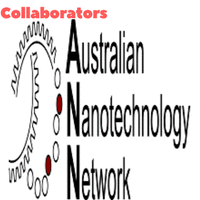
Shunsaku Kimura
Kyoto University, Japan
Title: Peptide-based nanoparticles of immune-evasive, immune-tolerable, and immune-active properties
Biography
Biography: Shunsaku Kimura
Abstract
Statement of the Problem: There are several candidates for a carrying vehicle of imaging and therapeutic agents targeting various kinds of tumors in the field of the emerging theranositcs. One effective vehicle is fully human antibodies, however, which cost high to threaten the preservation of the universal health insurance in Japan. Nanoparticles is the other potential candidate for the vehicle owing to the passive accumulation in solid tumors so called the EPR effect. However, nanoparticles should resolve the serious problem of the accelerated blood clearance (ABC) phenomenon which is the immune response triggered by nanoparticles. The purpose of this study is to demonstrate the designs of nanoparticles displaying immune-evasive, immune-tolerable, and immune-active properties. Methodology: Nanoparticles were prepared by the method of molecular assembling. The component molecules were amphiphilicpolypeptides and polydepsipeptides having poly(sarcosine) as a hydrophilic block. Findings: Nanoparticles having a densely packed hydrophilic layer around the nanoparticles were shown to evade from the immune system. When the nanoparticles were intravenously injected in tumor-bearing mice, they were found to accumulate in the tumor region at the 1st and 2nd doses similarly.

On the other hand, another nanoparticle, which was recognized by the immune system, was converted to the immune-tolerable nanoparticle by decorating the surface with sialic acid derivatives. Further, the immune-active nanoparticle was examined with using Ley as an antigen of solid tumors. The nanosheet expressing Ley on the surface was shown to be the most effective to trigger the immune system.
Conclusion & Significance: Nanoparticles intrinsically triggers the immune system, but can escape by a suitable surface design. The nanoparticles can be immune-tolerable by incorporation of sialic acids. Further, the antigen-carrying nanoparticle can be applied for cancer vaccination. Taken together, nanoparticles are highly potential in cancer medicine, resulting in support for the universal health insurance.

